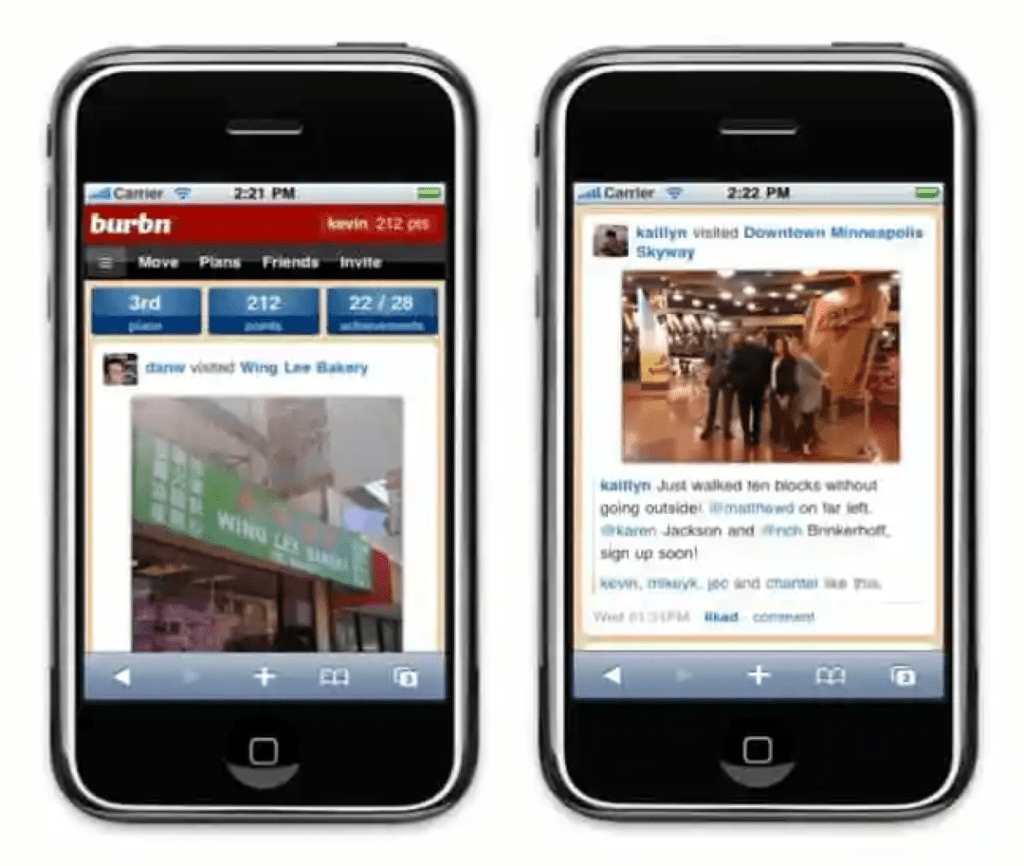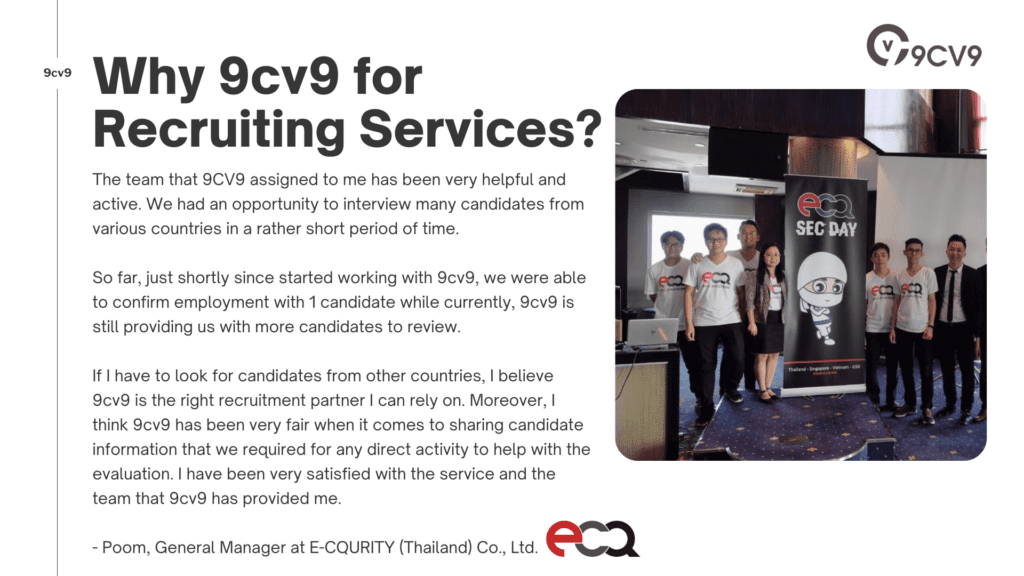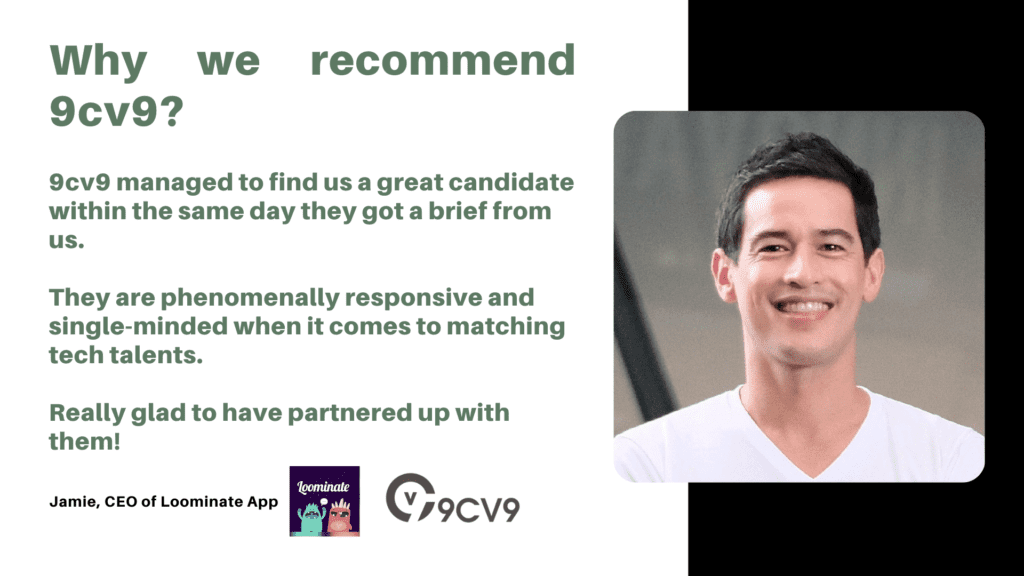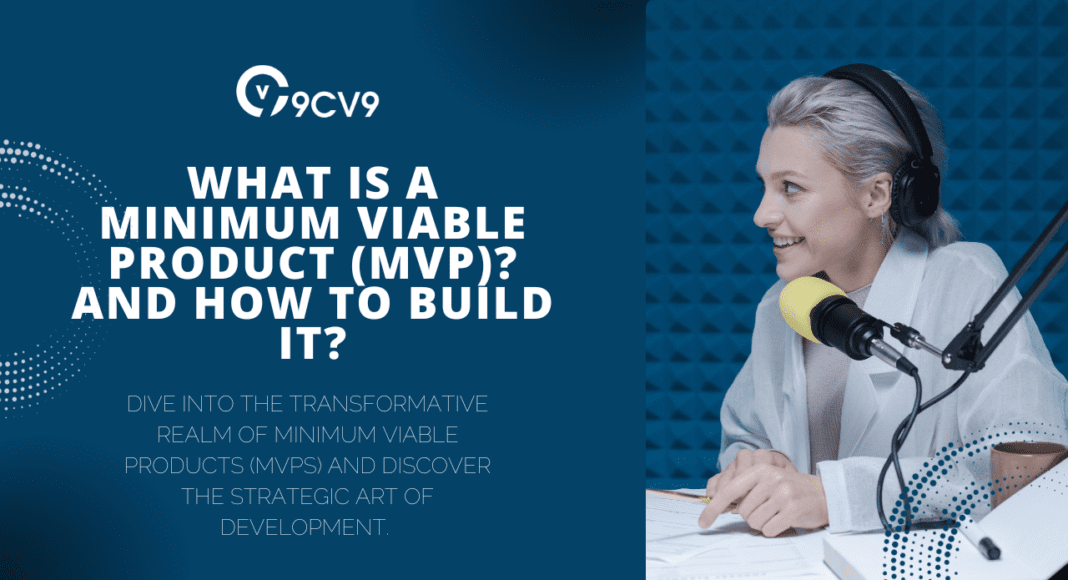Key Takeaways
- Mastering MVP Essentials: Uncover the core principles of a Minimum Viable Product (MVP), demystifying its strategic role in efficient and user-centric product development.
- Real-world Insights from MVP Pioneers: Learn from the success stories of industry giants like Dropbox and Instagram, gaining invaluable insights into how they navigated the MVP journey.
- Strategies for Success: Acquire actionable strategies for building a successful MVP, from defining clear objectives to overcoming common challenges. Elevate your product development game with this comprehensive guide.
In the ever-evolving landscape of product development, the concept of a Minimum Viable Product (MVP) stands as a guiding beacon, offering a strategic approach for startups and businesses alike.
As the entrepreneurial spirit continues to drive innovation, understanding the essence of an MVP has become paramount.
This comprehensive guide not only demystifies the concept of an MVP but also provides a roadmap on how to craft and launch one successfully.

Embarking on the MVP Journey: Defining the Unseen
At its core, a Minimum Viable Product is not just a product; it’s a philosophy, a methodology, and a testament to the dynamic nature of the business world.
Picture it as the initial brushstroke on the canvas of your grand vision—a strategically curated concoction of essential features designed to test the waters and captivate your audience.
But what truly encapsulates the essence of an MVP?
Let’s dive into the fundamental concepts that underscore the MVP framework.
From the inception of the term to its pivotal role in modern product development, we’ll unravel the layers that make an MVP more than just a product with minimal features.
Gain insight into the principles that govern the MVP mindset and learn how these principles can reshape your approach to product development.
The MVP Blueprint: Crafting Success in Every Iteration
Building an MVP isn’t merely a process; it’s an art form—a meticulous dance between innovation and practicality.
In this guide, we embark on a journey that delves into the intricacies of bringing your MVP to life, step by step.
From laying the groundwork with clearly defined goals to identifying your target audience, each phase is a crucial brushstroke, contributing to the masterpiece that is your Minimum Viable Product.
Why should you embark on this journey?
Discover the transformative power of an MVP as we explore its role in market validation, cost and time efficiency, and user-centric development.
Uncover the strategies that can transform your vision into a tangible reality while mitigating risks and maximizing your chances of success.
The Crucial Role of Feedback: Sculpting Your MVP for Success
As we navigate the terrain of MVP development, we recognize the pivotal role that user feedback plays.
In this guide, we not only emphasize the importance of gathering insights but also present practical strategies for implementing feedback loops effectively.
Witness the evolution of your MVP as it adapts to the changing needs and preferences of your users, ensuring a product-market fit that resonates.
But it doesn’t stop there.
Explore real-world case studies that showcase the triumphs and tribulations of companies that have successfully implemented MVPs.
Learn from their experiences, understand the nuances of their strategies, and glean insights that can steer your MVP journey towards triumph.
Navigating Challenges, Seizing Opportunities: A Holistic Approach to MVP Development
However, the road to a successful MVP isn’t without its challenges. In this guide, we shine a light on common hurdles and offer pragmatic solutions to overcome them.
Anticipate the pitfalls, arm yourself with knowledge, and navigate the terrain with confidence.
As we draw the curtain on this exploration, you’ll not only possess a deep understanding of what a Minimum Viable Product truly is but also hold the keys to crafting one that stands the test of time.
Embrace the principles, leverage the strategies, and embark on a journey that doesn’t just build products; it builds success stories.
Are you ready to unlock the potential of your ideas?
Join us on this expedition into the heart of MVP development, where innovation meets pragmatism, and ideas transform into impactful realities.
It’s time to redefine your approach, reshape your strategies, and embrace the transformative power of a well-crafted Minimum Viable Product.
Welcome to the world where progress isn’t just an outcome; it’s a journey.
Before we venture further into this article, we like to share who we are and what we do.
About 9cv9
9cv9 is a business tech startup based in Singapore with a strong presence all over the world.
With over seven years of startup and business experience, and being highly involved in connecting with thousands of companies and startups, the 9cv9 team has listed some important learning points in this overview of What is a Minimum Viable Product (MVP) And How to Build it.
If your company needs recruitment and headhunting services to hire tech developers and product managers to build an MVP, you can use 9cv9 headhunting and recruitment services to hire top talents and candidates. Find out more here, or send over an email to [email protected].
Or just post 1 free job posting here at 9cv9 Hiring Portal in under 10 minutes.
What is a Minimum Viable Product (MVP)? And How to Build it?
- What is a Minimum Viable Product (MVP)?
- Why Build a Minimum Viable Product (MVP)?
- How to Build a Minimum Viable Product (MVP)
- Common Challenges and How to Overcome Them
1. What is a Minimum Viable Product (MVP)?
In the dynamic realm of product development, the concept of a Minimum Viable Product (MVP) has emerged as a cornerstone strategy for startups and businesses.
An MVP is not just a product with minimal features; it’s a strategic approach aimed at validating assumptions, mitigating risks, and delivering value to users.
Let’s delve into the core principles and characteristics that define the essence of an MVP.
Defining a Minimum Viable Product (MVP)
- Definition: At its core, an MVP is a version of a new product that includes only the essential features required to meet user needs and garner feedback. It serves as a foundation for iterative development.
- Purpose: The primary goal of an MVP is to test hypotheses and assumptions about a product’s market demand, features, and functionality with the least amount of effort and resources.

Core Characteristics of a Successful MVP
- Lean Approach:
- Embraces the lean startup methodology, focusing on minimizing waste and maximizing learning through rapid iterations.
- Focused Features:
- Prioritizes a subset of features that address the core problems or needs of the target audience.
- Quick Iterations:
- Enables rapid development cycles, allowing for quick adjustments based on user feedback.
- User-Centric Design:
- Centers around the needs and preferences of the end-users, ensuring a more tailored and effective product.
Why MVP Matters: Impact on Market Validation and Efficiency
Market Validation Through MVP
- Testing Viability:
- An MVP serves as a litmus test for the viability of a product in the market. By launching a scaled-down version, businesses can gauge user interest and demand.
- Reducing Risk:
- According to a study, 42% of startups fail due to a lack of market need. An MVP mitigates this risk by validating the product-market fit early in the development process.
Cost and Time Efficiency with MVP
- Reduced Development Costs:
- A report suggest that fixing software bugs after release can be up to 100 times more expensive than addressing them during the design phase. MVP’s iterative development approach minimizes the cost of fixing issues post-launch.
- Faster Time-to-Market:
- According to a report by McKinsey, the average time for a traditional product development cycle is 15 months. MVP, with its focus on essential features, accelerates time-to-market, allowing businesses to respond to market changes more rapidly.
Building an MVP: Strategies and Best Practices
Defining Your Goals
- Clear Objectives:
- Clearly define what you aim to achieve with your MVP, whether it’s market validation, user engagement, or a combination of factors.
- Measurable Metrics:
- Identify key performance indicators (KPIs) to measure the success of your MVP, such as user engagement, conversion rates, and customer feedback scores.
Identifying Target Audience
- User Persona Development:
- Create detailed user personas based on demographic, psychographic, and behavioral factors to ensure that your MVP resonates with the intended audience.
- User Feedback Loops:
- Implement continuous feedback loops to gather insights from your target audience throughout the development process.
Feature Prioritization
- The 80/20 Rule:
- Apply the Pareto Principle by focusing on the 20% of features that will deliver 80% of the value to users.
- Minimum Feature Set:
- Identify the absolute minimum features required for a functional product, allowing for quicker development and testing cycles.
Building and Testing
- Technology Stack:
- Choose a technology stack that aligns with your development goals and allows for scalability as your product evolves.
- Iterative Development:
- Adopt an iterative development approach, releasing small increments and incorporating user feedback at each stage.
Real-world Examples of Successful MVP Implementation
Dropbox:
MVP Strategy: Dropbox started with a simple video demonstrating the concept before fully developing the product. This allowed them to gauge interest and validate the market need before investing heavily in development.
Zappos:
MVP Impact: Zappos initially tested the concept of selling shoes online by taking pictures of products from local shoe stores. This MVP approach helped them validate the demand for online shoe retailing without maintaining inventory.
Common Challenges and Strategies for MVP Development
Anticipating Challenges
- Scope Creep:
- Define a strict scope for your MVP to avoid feature creep, ensuring that you stay focused on essential functionalities.
- User Adoption:
- Implement strategies to encourage user adoption, such as effective onboarding processes and incentives for early adopters.
Overcoming Challenges
- Continuous Learning:
- Treat challenges as learning opportunities. Regularly analyze user feedback and iterate on your MVP to address emerging issues.
- Adaptability:
- Be prepared to adapt your MVP based on changing market conditions and user preferences.
As we conclude this exploration into the world of Minimum Viable Products, it’s evident that the power of an MVP lies not just in its simplicity but in its ability to guide businesses through the labyrinth of uncertainties.
By understanding the essence of an MVP, embracing efficient development strategies, and learning from real-world examples, businesses can unlock the potential to innovate, validate, and succeed in today’s competitive landscape.
The journey towards building a successful MVP is not just a process; it’s a transformation—one that redefines how we approach product development, turning ideas into impactful realities.
Welcome to the era where progress isn’t just an outcome; it’s a journey, and your MVP is the compass that leads the way.
2. Unveiling the Imperative: Why Build a Minimum Viable Product (MVP)?
The decision to build a Minimum Viable Product (MVP) is not just a strategic choice; it’s a pivotal step towards efficient, risk-mitigated product development.
Understanding the compelling reasons behind opting for an MVP can reshape the trajectory of startups and businesses, ensuring not only survival but thriving in the competitive landscape.
Testing the Waters: The Crucial Role of Market Validation
- Validation through Iteration:
- MVPs serve as a litmus test for market demand and acceptance. By introducing a scaled-down version of a product, businesses can quickly gauge user interest and adapt their strategies accordingly.
- Risk Mitigation:
- According to a study by CB Insights, the top reason for startup failure is “no market need,” accounting for 42% of cases. MVPs act as a preemptive strike against this risk, allowing businesses to validate assumptions before substantial investments.
Efficiency in Action: Cost and Time Optimization with MVP
- Cost-Efficient Development:
- A report highlights that fixing software bugs post-release can be up to 100 times more expensive than addressing them during the design phase. MVP’s iterative approach minimizes such post-launch costs.
- Accelerated Time-to-Market:
- A report indicates that the average time for a traditional product development cycle is 15 months. MVP, with its focus on essential features, expedites the development process, ensuring a faster time-to-market.
Real-world Examples of MVP Impact on Market Validation
Instagram:
MVP Strategy: Before becoming the photo-sharing giant we know today, Instagram started as an MVP (name was burbn, no kidding) with a focus on photo-sharing within a closed network. The initial positive response validated the concept and paved the way for further development.

Twitter:
MVP Success: Twitter’s early version was a side project at Odeo, a podcasting company. The team released a simple platform for internal use, testing its viability. The positive response led to Twitter’s evolution into a standalone product.
User-Centric Development: Crafting Products Tailored to Your Audience
- User Feedback Integration:
- MVPs facilitate a continuous feedback loop, allowing businesses to integrate user insights into subsequent iterations. This user-centric approach ensures that the final product aligns closely with user needs and expectations.
- Enhanced User Satisfaction:
- A study by Harvard Business Review found that companies that actively involve customers in their product development process tend to see higher customer satisfaction and loyalty.
Data-Driven Decision Making: Leveraging Insights for Success
- Strategic Iteration:
- MVPs generate invaluable data regarding user behavior, preferences, and engagement. This data becomes the foundation for strategic iteration, enabling businesses to refine their products based on real-world user interactions.
- Mitigating Feature Bloat:
- By analyzing user data, businesses can avoid the pitfalls of feature bloat—ensuring that each added feature contributes meaningfully to user experience.
Overcoming Market Uncertainties: A Strategic Approach to Innovation
- Adaptation to Change:
- MVPs empower businesses to adapt to market changes quickly. The iterative nature allows for seamless adjustments based on user feedback, technological advancements, and evolving market trends.
- Competitive Edge:
- Embracing innovation through MVPs provides a competitive edge by staying ahead of industry trends and customer expectations.
The decision to build a Minimum Viable Product transcends mere product development—it’s a strategic imperative for businesses seeking not just survival, but success in a competitive landscape.
From validating market demand to optimizing costs, embracing user-centricity, and leveraging data for strategic decision-making, the MVP approach is a transformative journey towards building products that resonate with users and stand the test of time.
As we navigate the intricacies of MVP development, the path becomes clear: it’s not just about building products; it’s about building success stories.
Welcome to the era where innovation meets efficiency, and your MVP is the catalyst for a flourishing future.
3. Navigating Success: How to Build a Minimum Viable Product (MVP)
The journey of building a Minimum Viable Product (MVP) is a strategic endeavor, requiring careful planning, thoughtful execution, and a commitment to user-centric development.
In this comprehensive guide, we’ll explore the essential steps and best practices to navigate the intricacies of MVP creation, drawing insights from successful examples and incorporating relevant data to guide your path.
Defining Your Goals: Laying the Foundation for Success
- Clear Objectives:
- Define the purpose of your MVP—whether it’s to test market viability, validate assumptions, or solve a specific problem. Clear objectives provide a roadmap for development.
- Measurable Metrics:
- Identify key performance indicators (KPIs) to measure the success of your MVP. Metrics such as user engagement, conversion rates, and customer feedback scores offer tangible insights.
Identifying Your Target Audience: Tailoring the MVP to User Needs
- User Persona Development:
- Create detailed user personas based on demographic, psychographic, and behavioral factors. This ensures that your MVP resonates with the intended audience.
- User Feedback Loops:
- Implement continuous feedback loops to gather insights from your target audience throughout the development process. Platforms like UserTesting and BetaList can aid in soliciting early feedback.
Feature Prioritization: Streamlining Development for Impact
- The 80/20 Rule:
- Apply the Pareto Principle by focusing on the 20% of features that will deliver 80% of the value to users. This ensures a streamlined development process and faster time-to-market.
- Minimum Viable Feature Set:
- Identify the absolute minimum features required for a functional product. This not only expedites development but also allows for quicker testing and iteration.
Building and Testing: The Iterative Approach in Action
- Technology Stack Selection:
- Choose a technology stack that aligns with your development goals and allows for scalability. Consider factors such as the complexity of features, development speed, and long-term maintainability.
- Iterative Development:
- Adopt an iterative development approach, releasing small increments of your MVP and incorporating user feedback at each stage. Tools like Jira and Trello can assist in managing the development process.
Gathering User Feedback: The Lifeblood of MVP Development
- Feedback Loops:
- Establish mechanisms for gathering continuous user feedback. This can include surveys, in-app feedback forms, and user testing sessions. Actively listen to user insights and adapt your MVP accordingly.
- Agile Development Principles:
- Embrace agile development principles, emphasizing flexibility and responsiveness to change. Regular sprint reviews and retrospectives facilitate continuous improvement based on user input.
Real-world Examples of Successful MVP Implementation
Airbnb:
MVP Strategy: Airbnb initially started as a simple website with photos and profiles of hosts offering accommodations. This allowed them to validate the concept and user interest before expanding their platform.

Spotify:
MVP Success: Spotify began as a lightweight desktop application with a focus on streaming music. Their initial version allowed them to test the market and refine their product based on user feedback.
Case Studies: Successful Implementation of MVPs
Buffer:
MVP Impact: Buffer, a social media scheduling tool, initially started with a basic landing page describing the product. They collected email sign-ups to gauge interest before fully developing the application. This MVP approach contributed to Buffer’s subsequent success.

Mailchimp:
Iterative Development: Mailchimp, an email marketing platform, continuously iterates on its features based on user feedback. Their MVP included essential email marketing functionalities, and over time, they added advanced features to meet evolving user needs.
Challenges and Strategies for MVP Development
Anticipating Challenges
- Scope Creep:
- Define a strict scope for your MVP to avoid feature creep. This ensures that your development stays focused on essential functionalities.
- User Adoption:
- Implement strategies to encourage user adoption, such as effective onboarding processes and incentives for early adopters.
Overcoming Challenges
- Continuous Learning:
- Treat challenges as learning opportunities. Regularly analyze user feedback and iterate on your MVP to address emerging issues.
- Adaptability:
- Be prepared to adapt your MVP based on changing market conditions and user preferences.
Building a Minimum Viable Product is not just a development process; it’s a transformative journey that aligns innovation with user needs.
By following the outlined steps, learning from successful examples, and remaining adaptable to challenges, your MVP can become a powerful tool for market validation, efficiency, and user satisfaction.
Welcome to the realm where progress isn’t just a destination; it’s a continuous journey fueled by strategic MVP development.
Bonus: Using 9cv9 Hiring and Offshoring service to hire product managers and developers to build your MVP
In the dynamic landscape of product development, assembling the right team is pivotal for the success of your Minimum Viable Product (MVP).
Leveraging the capabilities of 9cv9 Hiring and Offshoring services can be a strategic game-changer in the pursuit of assembling a skilled and efficient team of product managers and developers.

Streamlined Talent Acquisition:
- Efficient Hiring Process:
- 9cv9 streamlines the hiring process, ensuring swift and efficient recruitment of top-tier talent for your MVP project.
- Access to a Diverse Talent Pool:
- Tap into a diverse pool of skilled product managers and developers, providing you with a spectrum of expertise to match your specific project requirements.
Cost-Effective Offshoring Solutions:
- Financial Efficiency:
- Benefit from cost-effective offshoring solutions provided by 9cv9, allowing you to maximize the value of your budget while maintaining high-quality standards.
- Scalability and Flexibility:
- Enjoy the flexibility to scale your team up or down based on project requirements, adapting to the evolving needs of your MVP development.

Expertise in Product Development:
- Strategic Product Management:
- Access experienced product managers with a proven track record in guiding products from conception to successful launch.
- Skilled Development Teams:
- Build a robust development team with developers who are adept at cutting-edge technologies, ensuring the technical foundation of your MVP is solid.
Seamless Collaboration:
- Communication and Collaboration Tools:
- 9cv9 facilitates seamless collaboration through state-of-the-art communication tools, fostering an environment where your onshore and offshore teams can work cohesively.
- Project Management Support:
- Benefit from robust project management support, ensuring that your MVP development stays on track and aligns with your strategic goals.
Case Studies: Success Stories with 9cv9:
- Demonstrated Success:
- Explore case studies showcasing successful MVP development projects powered by 9cv9 Hiring and Offshoring services, highlighting the tangible impact on efficiency, cost-effectiveness, and project success.

How to Get Started:
- Consultation and Planning:
- Initiate the journey by consulting with 9cv9 experts, who can guide you through the process of tailoring a hiring and offshoring strategy that aligns with your MVP goals.
- Customized Solutions:
- Enjoy personalized solutions that address the unique requirements of your project, ensuring a bespoke approach to talent acquisition and team building.
If your company needs recruitment and headhunting services to hire tech developers and product managers to build an MVP, you can use 9cv9 headhunting and recruitment services to hire top talents and candidates. Find out more here, or send over an email to [email protected].
Or just post 1 free job posting here at 9cv9 Hiring Portal in under 10 minutes.
Embrace the power of 9cv9 Hiring and Offshoring services to craft a dream team for your MVP journey.
From streamlined talent acquisition and cost-effective offshoring to accessing expertise in product management and development, 9cv9 empowers you to assemble a high-performing team poised for success.
Elevate your MVP project with a collaborative, skilled, and cost-efficient approach—welcome to a partnership that transforms your vision into a reality.
4. Navigating the Terrain: Common Challenges and Strategies for Overcoming Them in MVP Development
Building a Minimum Viable Product (MVP) is not without its hurdles, and understanding and overcoming these challenges are critical for success.
In this comprehensive guide, we’ll explore common obstacles faced during MVP development and present effective strategies to navigate and triumph over them.
Anticipating and Addressing Challenges
Scope Creep: Keeping Your MVP on Track
- Challenge:
- Definition: Scope creep refers to the gradual expansion of a project’s goals, leading to an increase in its scope without corresponding increases in resources or time.
- Impact:
- Statistics: According to the Project Management Institute (PMI), 52% of projects experience scope creep. This can lead to delays, increased costs, and a loss of focus on essential features.
- Strategies:
- Clearly Defined Scope:
- Define a strict scope for your MVP, outlining the features and functionalities that align with your primary objectives.
- Continuous Communication:
- Maintain open communication with stakeholders, ensuring a shared understanding of the defined scope and the importance of sticking to it.
- Clearly Defined Scope:
User Adoption: Encouraging Engagement from the Start
- Challenge:
- Definition: User adoption challenges arise when users are hesitant to engage with or fully embrace a new product or service.
- Impact:
- Data: A study found that 80% of new software features are not used by customers. Low user adoption can lead to underutilization of your MVP and hinder its success.
- Strategies:
- Effective Onboarding:
- Implement a user-friendly onboarding process to guide users through your MVP’s features, enhancing their understanding and encouraging engagement.
- Incentivize Early Adoption:
- Offer incentives, such as exclusive features or discounts, to early adopters. This can create a sense of exclusivity and encourage users to explore your MVP.
- Effective Onboarding:
Overcoming Challenges and Embracing Success
Continuous Learning: Treating Challenges as Opportunities
- Challenge:
- Definition: The fast-paced nature of MVP development often presents unforeseen challenges that require constant learning and adaptation.
- Impact:
- Success Stories: Companies that embrace continuous learning are more likely to succeed. For example, Amazon’s continuous learning culture has been fundamental to its growth and innovation.
- Strategies:
- Regular Analysis of User Feedback:
- Actively analyze user feedback, identify pain points, and use this information for continuous improvement in subsequent iterations.
- Post-Iteration Retrospectives:
- Conduct retrospectives after each development iteration to assess what worked well, what didn’t, and how the process can be optimized.
- Regular Analysis of User Feedback:
Adaptability: Responding to Market Dynamics
- Challenge:
- Definition: Market conditions, user preferences, and technological advancements can change rapidly, requiring businesses to adapt their MVPs accordingly.
- Impact:
- Data: According to a report, companies that quickly adapt to market changes are 2.6 times more likely to be among the top performers in their industry.
- Strategies:
- Regular Market Analysis:
- Stay informed about market trends, competitor activities, and technological advancements to proactively adapt your MVP.
- Flexibility in Development:
- Embrace agile development methodologies that allow for quick adjustments based on changing circumstances.
- Regular Market Analysis:
Navigating common challenges in MVP development is not only possible but crucial for success.
By anticipating scope creep, addressing user adoption hurdles, embracing continuous learning, and staying adaptable, businesses can turn challenges into stepping stones toward a successful Minimum Viable Product.
Real-world examples from companies like Buffer and Mailchimp demonstrate that overcoming challenges is not only necessary but can lead to the refinement and optimization of your MVP, ultimately contributing to its triumph in the market.
Welcome to the realm where challenges become opportunities, and your MVP is the catalyst for transformative success.
Conclusion
Embarking on the journey of understanding and building a Minimum Viable Product (MVP) is not merely a foray into product development—it’s a strategic pursuit that intertwines innovation, adaptability, and user-centricity.
As we traverse the realms of MVPs, from demystifying their core concepts to unraveling the intricacies of their construction, the significance of this approach becomes abundantly clear.
The Essence of MVP: A Strategic Compass for Success
At its core, an MVP isn’t just about creating a product with minimal features; it’s a philosophy that redefines the product development landscape.
It’s a testament to the power of testing assumptions, validating market demand, and delivering value in a streamlined manner.
By adopting the principles of an MVP, businesses are not only reducing risks but also propelling themselves towards success in an agile, ever-evolving market.
Strategies for MVP Success: A Roadmap Unveiled
**1. Defining Clear Objectives:
- The journey begins with crystallizing your goals. By establishing clear objectives for your MVP, you’re not only providing a roadmap for development but also setting the stage for measurable success.
2. Identifying Your Audience:
- Crafting detailed user personas and engaging in continuous user feedback loops ensures that your MVP is tailor-made to address the needs and preferences of your target audience.
3. Prioritizing Features:
- The 80/20 rule becomes your guiding principle as you focus on the essential features that deliver maximum value. This strategic prioritization streamlines development, ensuring efficiency and speed.
4. Building and Testing Iteratively:
- Choosing the right technology stack and embracing an iterative development approach are the keystones of MVP success. This not only accelerates time-to-market but also allows for quick adjustments based on user feedback.
5. Gathering User Feedback:
- Continuous user feedback isn’t just a step—it’s a lifeline. Platforms, tools, and methodologies that enable effective feedback loops are the conduits through which your MVP evolves into a product that resonates with your audience.
Real-world Triumphs: Learning from the Pioneers
The success stories of companies like Dropbox, Instagram, and Twitter stand as testament to the transformative power of MVPs.
These pioneers not only validated their ideas through scaled-down versions but also demonstrated the adaptability and innovation inherent in the MVP approach.
From Dropbox’s simple video demonstration to Instagram’s closed-network photo sharing, each exemplifies the strategic acumen required to succeed in today’s competitive landscape.
Overcoming Hurdles: Turning Challenges into Stepping Stones
Yet, the path to MVP success is not without challenges. Scope creep, user adoption hesitancies, and the need for continuous adaptation are hurdles that demand attention.
The strategies outlined, inspired by real-world cases such as Buffer and Mailchimp, illustrate that challenges are not roadblocks but rather opportunities for refinement and growth.
Welcome to a Realm of Continuous Progress
In conclusion, the journey into the world of Minimum Viable Products is an odyssey of continuous progress—a journey where each iteration, each challenge, and each triumph propels you forward.
As you apply the principles, strategies, and insights gained from this comprehensive guide, remember that building an MVP is not just about developing a product; it’s about crafting success stories, fostering innovation, and navigating the ever-changing currents of the market.
So, welcome to a realm where progress isn’t a destination—it’s a continuous journey.
Your MVP is not just a product; it’s a strategic compass that guides you towards success in an era where adaptability, user-centricity, and efficiency reign supreme.
As you embark on your MVP expedition, may each iteration be a testament to your innovation, and may your success stories reshape industries and inspire the next generation of pioneers.
Here’s to the transformative power of Minimum Viable Products—a beacon lighting the way to success in the dynamic landscape of modern business.
If your company needs HR, hiring, or corporate services, you can use 9cv9 hiring and recruitment services. Book a consultation slot here, or send over an email to [email protected].
If you find this article useful, why not share it with your hiring manager and C-level suite friends and also leave a nice comment below?
We, at the 9cv9 Research Team, strive to bring the latest and most meaningful data, guides, and statistics to your doorstep.
To get access to top-quality guides, click over to 9cv9 Blog.
People Also Ask
What is meant by minimum viable product MVP?
A Minimum Viable Product (MVP) is the most basic version of a product with essential features, allowing rapid development and launch. Its purpose is to gather feedback, validate assumptions, and meet minimum requirements for market entry, optimizing resources and facilitating iterative improvements.
What MVP means?
MVP stands for Minimum Viable Product. It is the most basic version of a product that includes essential features for initial launch. The primary goal is to quickly release the product to gather user feedback, validate assumptions, and make iterative improvements efficiently.
What is the minimum viable data product?
The Minimum Viable Data Product (MVDP) is the most basic version of a data product, incorporating essential features for launch. It focuses on delivering value through data-driven insights, allowing for rapid development, user feedback, and iterative enhancements to meet specific business goals.































![Writing A Good CV [6 Tips To Improve Your CV] 6 Tips To Improve Your CV](https://blog.9cv9.com/wp-content/uploads/2020/06/2020-06-02-2-100x70.png)


